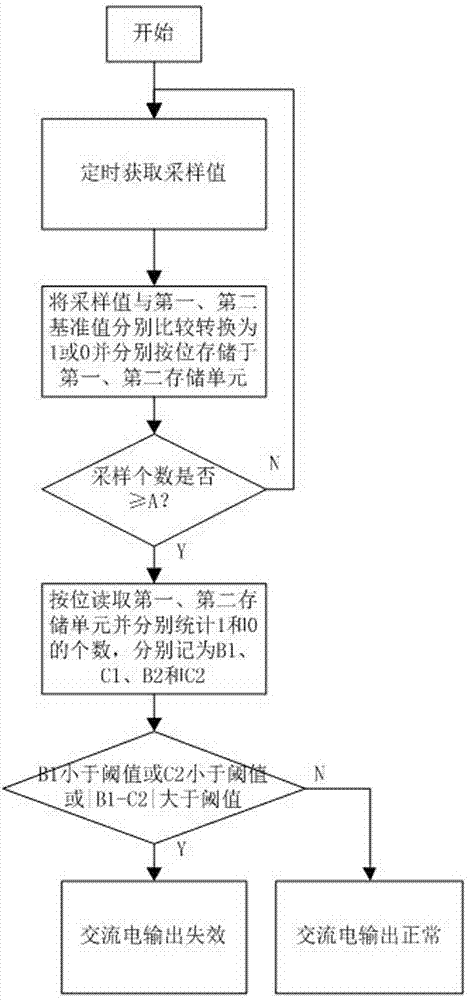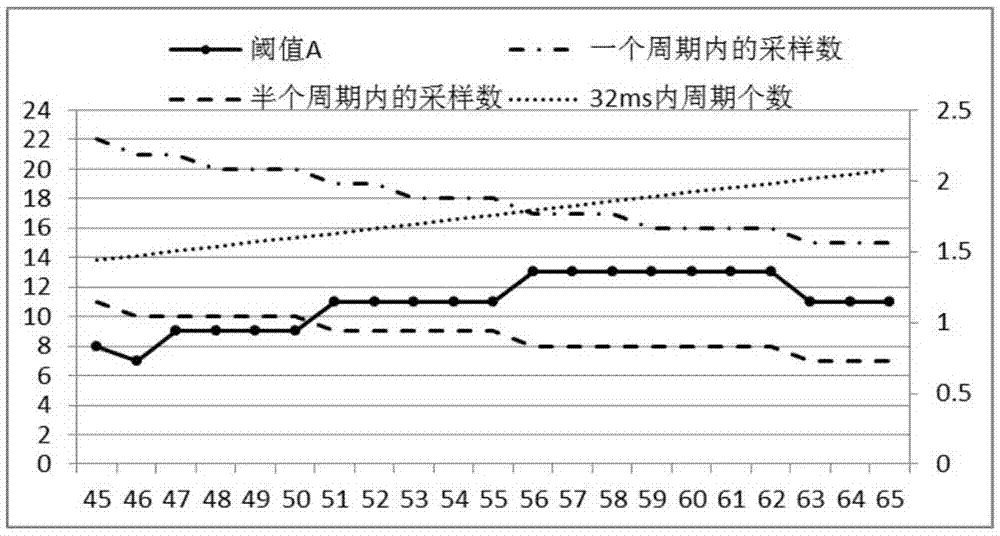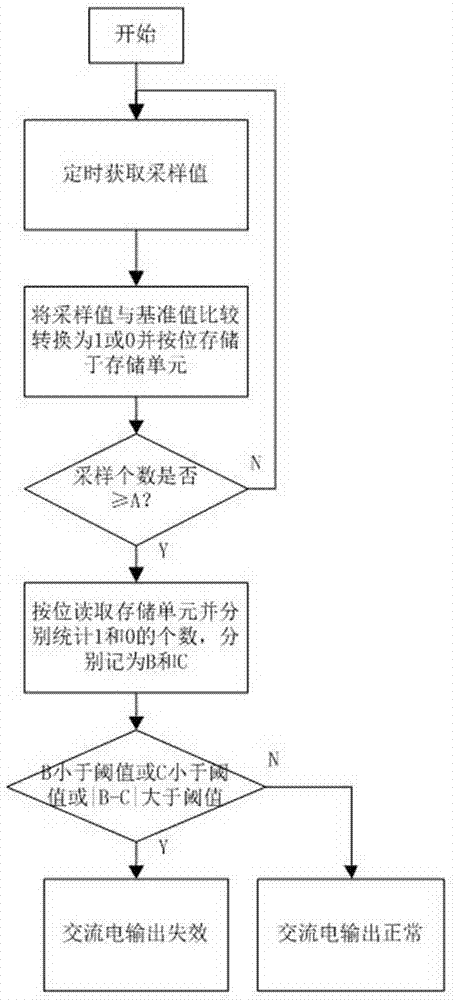Method for determining failure of alternating-current power detecting unit
A technology of alternating current detection and alternating current, applied in the direction of measuring devices, measuring electrical variables, instruments, etc., can solve problems such as Hall sensor damage is not easy to be found, detection results are wrong, and correct judgments are affected, and the judgment method is simple and effective, and the occupancy is reduced , the effect of saving network bandwidth
- Summary
- Abstract
- Description
- Claims
- Application Information
AI Technical Summary
Problems solved by technology
Method used
Image
Examples
Embodiment 1
[0033] The invention provides a method for judging the failure of an alternating current detection unit, such as figure 1 As shown, follow the steps below to achieve:
[0034] Step S1: Timing Ts samples the voltage value or current value output by an AC detection unit; after comparing each sampled value with a reference value, converts the sampled value into a binary bit code 1 or 0, and converts the binary bit code Store in a storage unit bit by bit; A sampling values are sampled in a judging period, and the judging period A*Ts is not less than the period T of the alternating current;
[0035] Step S2: read and count the number of binary bit codes 1 and 0 in the storage unit bit by bit, and record them as B and C respectively;
[0036] Step S3: Compare B and C with a threshold, or compare |B-C| with the threshold; when at least any one of B or C is less than the threshold or |B-C| is greater than the threshold, it is judged as an AC detection unit Invalid; where |B-C| is ...
Embodiment 2
[0050] The invention provides a method for judging the failure of an alternating current detection unit, such as figure 2 As shown, follow the steps below to achieve:
[0051] Step S1: Timing Ts samples the voltage value or current value output by an AC detection unit; after comparing each sampled value with a reference value, converts the sampled value into a binary bit code 1 or 0, and converts the binary bit code Store in a storage unit bit by bit; A sampling values are sampled in a judging period, and the judging period A*Ts is not less than the period T of the alternating current;
[0052] Step S2: read and count the number of binary bit codes 1 and 0 in the storage unit bit by bit, and record them as B and C respectively;
[0053] Step S3: Compare B and C with a threshold, or compare |B-C| with the threshold; when at least any one of B or C is less than the threshold or |B-C| is greater than the threshold, it is judged as an AC detection unit Invalid; where |B-C| is...
Embodiment 3
[0070] In the single-phase detection of Hall failure in UPS, the traditional method of detecting the failure of the Hall AC current sensor by judging that the effective value of the sum of the three-phase inverter current exceeds a certain threshold is often limited to the three-phase three-wire system. Phase four wire or single phase systems are not valid. The traditional method can only judge the failure of the Hall AC current sensor, but cannot specifically locate which phase of the Hall AC current sensor fails.
[0071] Furthermore, the inverter current under normal UPS operation can exhibit AC characteristics regardless of no-load or full-load, and the inverter current sampled under the Hall failure situation exhibits more DC characteristics. Based on the above feature extraction, in this embodiment, the first reference value and the second reference value are determined to be 3A and -3A respectively, and the sampling current is divided into positive area (>3A), negative ...
PUM
 Login to View More
Login to View More Abstract
Description
Claims
Application Information
 Login to View More
Login to View More - R&D
- Intellectual Property
- Life Sciences
- Materials
- Tech Scout
- Unparalleled Data Quality
- Higher Quality Content
- 60% Fewer Hallucinations
Browse by: Latest US Patents, China's latest patents, Technical Efficacy Thesaurus, Application Domain, Technology Topic, Popular Technical Reports.
© 2025 PatSnap. All rights reserved.Legal|Privacy policy|Modern Slavery Act Transparency Statement|Sitemap|About US| Contact US: help@patsnap.com



